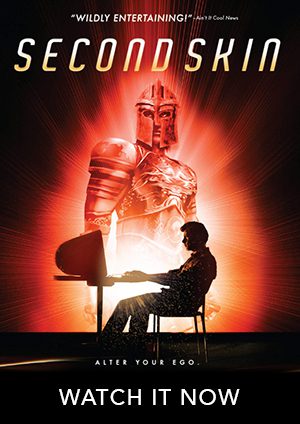For a variety of reasons, science fiction movies tend to be heavy on the fiction and pretty light on the science. It’s not that writers and directors are willfully ignorant of physics; it’s just that it’s a whole lot easier to tell a story without having to worry about certain scientific details getting in the way. These are, after all, movies, not term papers. Yet there are a handful of sci-fi movies that endeavor to get the science right, at least to a degree. They’re still devoted to telling a story in thrilling and often fanciful ways, but they also base those stories on a (slightly) more rigorous understanding of science than most other genre entries. Watching them won’t get you a bachelor’s degree, but it will give you an idea of what life in the future might look like.
- 2001: A Space Odyssey: Stanley Kubrick’s 1968 space opera is usually remembered for its music, its length, and its surreal ending in which astronaut Dave Bowman travels time and space before turning into the Star-Child. (It was the ’60s.) But much of the science is remarkably accurate when it comes to depicting life among the stars, particularly the rotating space station that uses centripetal force to simulate gravity for its inhabitants. Co-writer Arthur C. Clarke’s scientific background and the presence of multiple scientific advisors during the film’s production insured a higher degree of authenticity than in most sci-fi features, especially those from the era. It’s been lauded by researchers for its quality, as well.
- Alien: Appearing only two years after Star Wars, Alien earns its scientific cred by portraying a dirty, lived-in world that feels not so much like a sci-fi projection of the future as a realistic look at modern life infused with future technology. The crew of the Nostromo is still a rag-tag bunch of blue-collar workers that wouldn’t be out of place on an oil rig in the 20th century, and the weapons and radar used to hunt the creature feel like basic and even low-quality tools. The film works precisely because the characters take the tech for granted, just like we do with ours today.
- Gattaca: The premise of Gattaca is that in the future, people will be classified by their hereditary traits and have their breeding monitored and divided based on whether they procreated by traditional means or decided to create a child with the best possible DNA profile. It’s a fanciful premise based largely on futuristic tech, but the roots of the film’s liberal eugenics are anything but fictional. With the rise of stem cell research and advances in possible cloning machinery, it’s not impossible to imagine a world where disease is bred out and where health determines your social class.
- Solaris: Stanislaw Lem’s novel was turned into a Russian film in 1972 and an American one in 2002. The planet Solaris is admittedly a pretty outlandish conceit: it’s a swirling ball of light that has the ability to physically manifest copies of your own memories, which makes for some uncomfortable moments when the main character’s wife comes back from the dead. But, like 2001, the films are committed to a mostly realistic portrayal of life in space. The ’02 version is almost ferocious in downplaying the sci-fi stuff; aside from the mind-reading planet, it could be a workplace drama/thriller.
- Children of Men: Inspired by P.D. James’ novel and directed by Alfonso Cuaron, this 2006 film is a gorgeously bleak dystopian tale that uses futuristic gadgets in smart but subtle ways. Set in 2027, the story deals with a society that’s lost the ability to breed and the storied birth of the first child in years. The edges of the film are filled with great touches like heads-up displays in cars and interactive ads in public spaces, both advances that are based on current technology. By setting the film in the near future and only slightly exaggerating the science, the film feels more real than most “futuristic” ones.
- Sunshine: Danny Boyle’s 2007 film goes a little off the rails toward the end, but the science of the sci-fi is mostly on point. The story revolves around a ship sent from a dying Earth to reignite a Sun that’s on the verge of winking out, and the vessel is loaded with the kinds of real things such a journey would require, like plants to help recycle the air. The film’s science advisor stated that the film isn’t completely accurate, since the ultimate goal isn’t to make a documentary but to tell a story. Still, it’s one of the more gripping sci-fi flicks in recent years, thanks in part to its attempts at verisimilitude.
- Moon: The debut film from director Duncan Jones is a fantastic little story almost entirely carried by Sam Rockwell, and it’s also a realistic if speculative look at what might be required for a manned colony on the Moon. Rockwell’s character is charged with living alone on the station to harvest moon rocks as an energy source for Earth, and the film explores a dark moral side of the cost of living alone on a barren world. The movie also sports a retro style that ranks it with 1970s-era sci-fi, once again placing the emphasis on the characters and their place in the world and less on implausible technology.
- Primer: Shot on a shoestring for $7,000, writer-director Shane Carruth’s Primer won the Grand Jury Prize at Sundance in 2004 for its amazingly complex and utterly real depiction of time travel. A group of weekend inventors come up with a way to travel through time by basically rewinding time and living through part of a day for a second time. (For a much clearer explanation of the execution and effects, read this.) The film is notable for its low-rent approach to scientific invention, with the emphasis placed on the scientific method used to discover the time travel. No cheesy lights or flashy effects here, just an air of authenticity that’s almost impossible to top.
- Serenity: There are, admittedly, more than a few things about Serenity that place it squarely in the fictional realm, including its depiction of a future that’s still caught in its own version of Reconstruction. But the space travel and battles hew (somewhat) close to reality thanks to the fact that ships can’t travel faster than light and that dogfights are usually devoid of sound, since space is a vacuum. A fun, action-based sci-fi movie that, if not totally realistic, at least makes a solid effort.
- Minority Report: During production, Steven Spielberg worked with a think tank of tech experts to brainstorm ideas about what the world might look like in 2054, the setting of Minority Report. As a result, the science of the sci-fi feels remarkably realistic, only a stone’s throw into our future. Tom Cruise’s character uses a giant touch-responsive screen that was just a dream when production began in 1999, and still fanciful when the film came out in 2002. Yet just a few years later, the ubiquity of devices like the iPhone and iPad show that we’re on track to invent the things we already dreamed of inventing. Not bad for Hollywood.
Carol Brown is a regular writer for Online Degrees.






